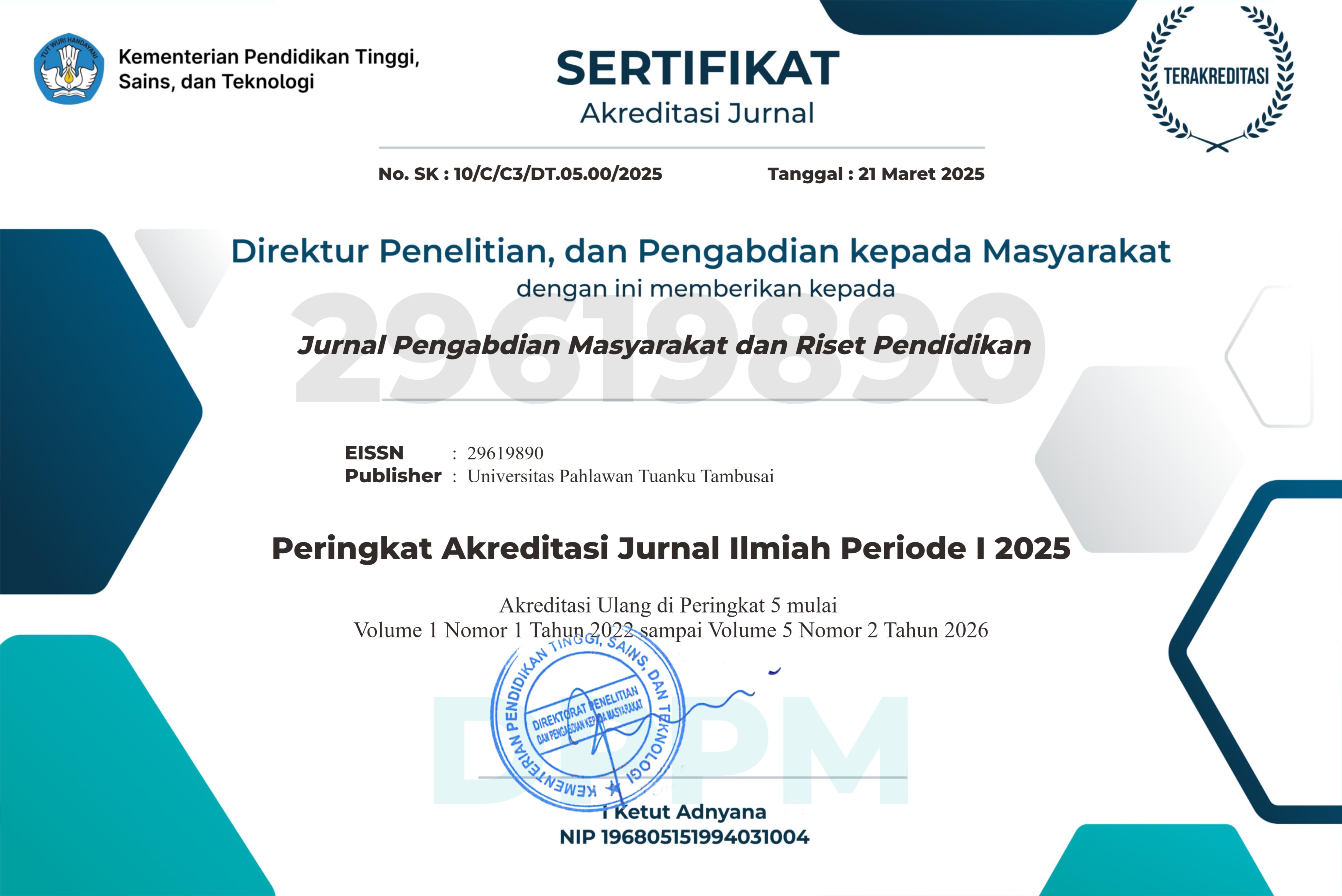Validitas dan Reliabilitas Instrumen Prokrastinasi Akademik dan Motivasi Berprestasi Mahasiswa
Penelitian
DOI:
https://doi.org/10.31004/jerkin.v3i4.666Keywords:
Validitas Instrumen Tes, Reliabilitas Instrumen Tes, Motivation, Students' Academic ProcrastinationAbstract
This study aims to examine the validity and reliability of two psychological scales developed to measure academic procrastination and achievement motivation among university students. The validity of the instruments was assessed using Pearson Product-Moment correlation, while internal consistency reliability was tested using Cronbach’s Alpha coefficient. A pilot study was conducted with a sample of 20 students outside the main study program to ensure the instruments' objectivity. The results showed that out of 28 items on the academic procrastination achievement motivation scale, 21 items were valid, with a reliability score of α =0.872. Meanwhile, the acheivement motivation academic procrastination scale consisted of 40 items, of which 32 items were valid, and the reliability coefficient was α = 0.883. These findings indicate that both instruments have strong psychometric properties and are suitable for use in psychological and educational research. The study highlights the importance of instrument development procedures, including item analysis and pre-testing, to ensure accurate and consistent measurement.
References
Azwar, S. (2016). Penyusunan Skala Psikologi. Pustaka Pelajar.
Cozby, P. C., & Bates, S. C. (2012). Methods in behavioral research. In K. Bettino (Ed.), McGraw-Hill (11th ed.). Michael Sugarman.
DeVellis, R. F. (2017). Scale Development Theory and Applications (Fourth Edition). In SAGE Publication (Vol. 4).
Elliot, A. J., & Church, M. A. (1997). A hierarchical model of approach and avoidance achievement motivation. Journal of Personality and Social Psychology, 72(1), 218–232. https://doi.org/10.1037//0022-3514.72.1.218
McClelland, D. C. (1961). The achieving society. In Van Nostrand. Van Nostrand.
Mujibah, S. N., & Rohmadani, Z. V. (2024). Analisis validitas dan reliabilitas serta gambaran motivasi berprestasi pada mahasiswa. Prosiding Seminar Nasional Universitas ‘Aisyiyah Yogyakarta, 3(1), 78–84.
Nunnally, J. C., & Bernstein, I. H. (1994). Psychometric theory. USA: McGraw-Hill, Inc.
Paksi, E. W. H., Okfrima, R., & Mariana, R. (2020). Hubungan Antara Kohesivitas Dan Motivasi Berprestasi Dengan Kemalasan Sosial (Social Loafing) Pada Mahasiswa Jurusan Psikologi Universitas Negeri Padang. Psyche 165 Journal, 13(1), 53–59. https://doi.org/10.35134/jpsy165.v13i1.45
Purnomo, A. (2023). Pengaruh self regulated learning dan grit terhadap prokrastinasi akademik mahasiswa [Universitas Muhammadiyah Gresik]. http://eprints.umg.ac.id/9518/
Sirois, F., & Pychyl, T. (2013). Procrastination and the Priority of Short-Term Mood Regulation: Consequences for Future Self. Social and Personality Psychology Compass, 7(2), 115–127. https://doi.org/10.1111/spc3.12011
Solomon, L. J., & Rothblum, E. D. (1984). Academic procrastination: Frequency and cognitive-behavioral correlates. Journal of Counseling Psychology, 31(4), 503–509. https://doi.org/10.1037//0022-0167.31.4.503
Steel, P. (2007). The nature of procrastination: A meta-analytic and theoretical review of quintessential self-regulatory failure. Psychological Bulletin, 133((1)), 65–94.
Tuckman, B. W. (1991). The development and concurrent validity of the procrastination scale. Educational and Psychological Measurement, 51(2), 473–480. https://doi.org/10.1177/0013164491512022
Downloads
Published
How to Cite
Issue
Section
License
Copyright (c) 2025 Siska Putri Ayu, Fadhilah Syafwar, Irman, Ryan Hidayat Rafiola

This work is licensed under a Creative Commons Attribution-ShareAlike 4.0 International License.















